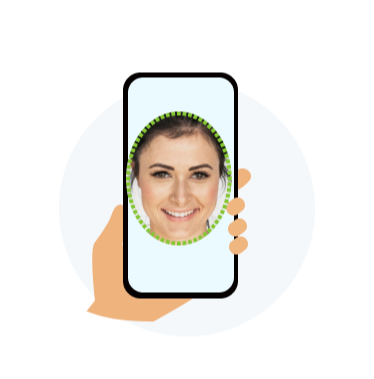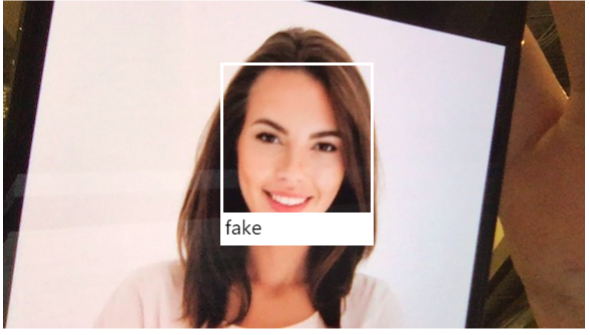
What is Liveness Detection and How Does it Work?
Biometric authentication has increasingly been incorporated into our everyday lives - from smartphones unlocked with faces to office doors accessed via facial recognition. And using of biometric authentication will be increasing drastically since businesses want to protect their systems from potential face spoofing and fraud. The global biometrics market numbers will grow to an astounding $82.8 billion by 2027. But what is liveness detection? How does liveness detection work? Is it effective in preventing fraud? In this article, we will answer all these questions.
What is liveness detection?
Liveness detection is the process of verifying an individual’s liveness - it detects whether a biometric authentication sample is a live human being or a fake representation. The system may ask a user to take a selfie or to prove their liveness by live video. Liveness detection helps to prevent spoofing attempts, for example, if someone trying to access the system with a face mask, photo, or a deep fake video, it will not allow the individual to access this system.
What is the difference between facial recognition and liveness detection? Both these technologies are connected and can be used by businesses together but they are not the same.
Facial recognition analyzes and compares facial features to identify individuals. The technology compares the facial features in an image to a reference database of known individuals. Liveness detection determines whether a face in an image is real or a spoof but it doesn’t identify who the person is.
How does liveness detection work?
As it was said above, to access the system may ask you to present a biometric sample like a selfie or a video. Here's how it works in both cases.
When an image is analyzed in the liveness process:
An individual presents a biometric sample, for example, a selfie.
With the help of pre-trained data, the system starts to analyze whether the sample is real or fake. Then, if a selfie is real, a person will get access, and the fake one will be automatically discarded.
In this case, the system analyzes not only facial features, but also other elements in the photo, such as lighting, background, and more.

If you’re asked to record a micro video, it will work like the following:
A user presents a biometric sample, a micro video in this case.
The technology records a micro video from which a series of images are extracted and then decides whether this person is real or an imposter.
However, the above description is simplified. Usually, different methods are used in liveness detection to make it more effective.
Methods of Liveness Detection
The liveness detection technology usually analyzes the facial features, the background, light, and gestures to determine whether the person is real or not. That’s why there are many different liveness detection techniques:
Passive liveness checks. The passive liveness method analyzes the properties of an image or a video, for example, lighting and texture.
Active liveness checks. The active liveness method requires an individual to perform specific actions like blinking, nodding, or smiling.
Hybrid liveness method. This method combines both passive and active checks.
You can learn more about these methods and our approach here: Enhance Security and Defeat Spoofing: A Comprehensive Guide to Liveness Detection Implementation
Presentation Attack (PA)
In order to get access to important information, fraudsters use artifacts of a human biometric feature or instruments such as a printed or digital image of a face, a video, or a realistic latex mask of someone's face. It’s called presentation attacks (PA).
Let’s review the most common classification of PAs:
Photo attacks. In this case, a photo of a certain person is displayed in front of the camera. It can be printed or displayed on a screen. The more expensive and complex technique is to create a mask like a TikTok mask.
Video attacks or replay attacks. In this case, fraudsters play a pre-recorded video displayed on a device that contains the face of the person.
Mask attacks. With the power of 3D printing technology, it’s easy to create silicone masks incorporating features like realistic textures and complexions, hair and eyelashes, and even heat emitters.

However, many more methods can be used by fraudsters to get access to important information and systems. The above ones are the most common.
How Liveness Detection Helps Businesses
As you can see, the liveness detection technology is the technology that every business should implement. If you still think that this is not important, here are some numbers that will show you how this technology will improve your business and how much money it will help you save.
Fraud Prevention
90% reduction in voice spoofing attacks.
50% decrease in fraudulent account openings.
$1.7 billion saved by financial institutions on fraud in 2022.
ROI of 500% for implementing liveness detection.
Customer Experience
73% of consumers prefer biometric authentication over passwords.
20% faster authentication with liveness detection.
97% customer satisfaction with the liveness detection experience.
Operational Efficiency
42% more calls are handled per agent in call centers with liveness detection.
30% reduction in chargeback disputes.
Improved compliance with KYC/AML regulations.
Reputation & Trust
67% of consumers feel more secure with businesses using liveness detection.
25% increase in brand loyalty due to enhanced security.
Reduced risk of data breaches and reputational damage.
These numbers paint a clear picture: liveness detection is not just a security measure, it's a business imperative. By preventing fraud, improving customer experience, and boosting efficiency, liveness detection delivers a positive impact across the board.
Conclusion
The cost of implementing liveness detection pales in comparison to the potential losses incurred by security breaches and fraudulent activities. Consider it an investment in your future, safeguarding your assets and establishing a foundation for sustainable growth.
Liveness detection is not just a technological trend; it's a necessity for any business committed to secure operations and a thriving future. Embrace this powerful tool and watch your security posture, customer trust, and bottom line soar to new heights.